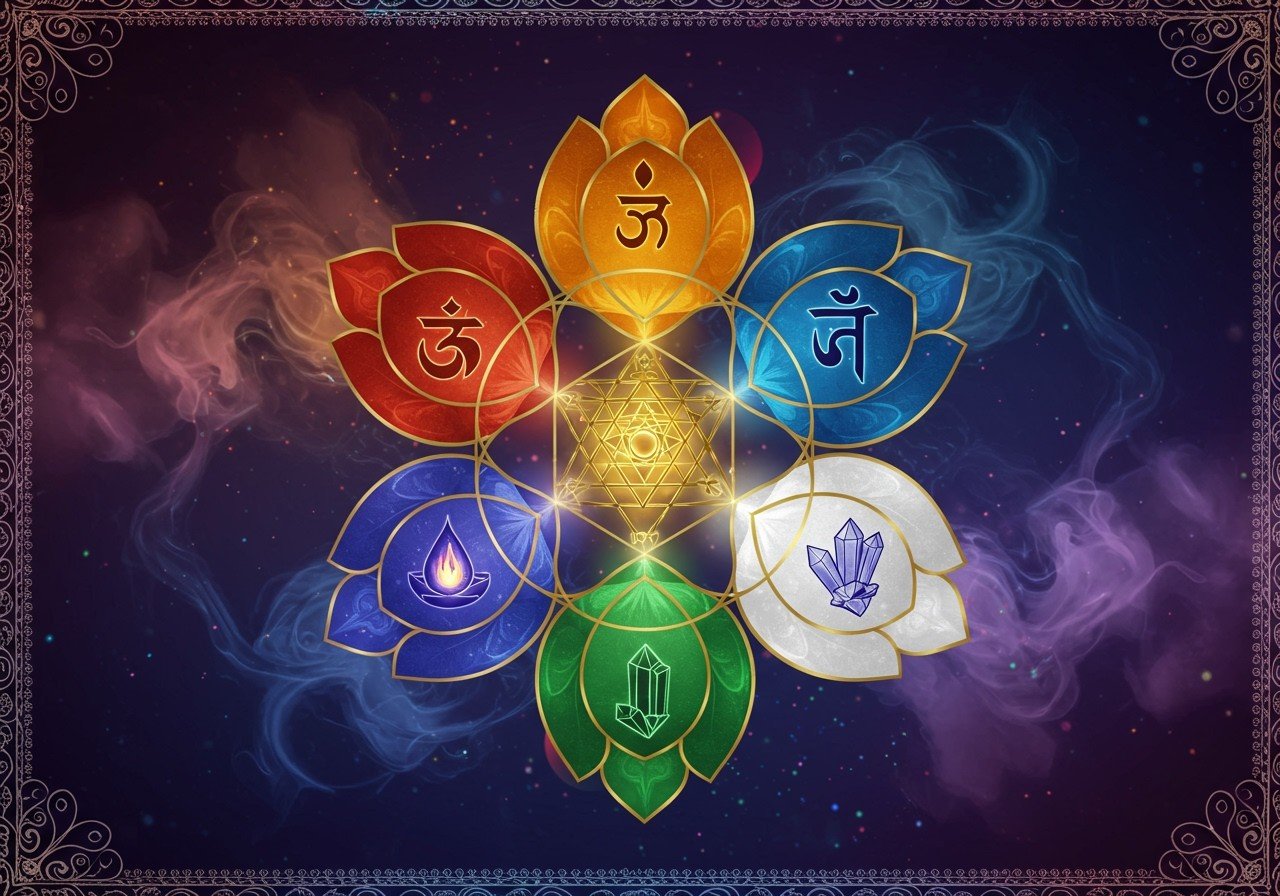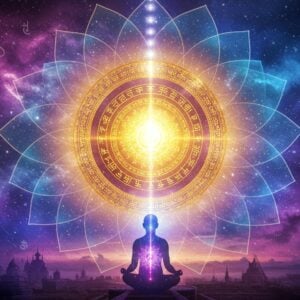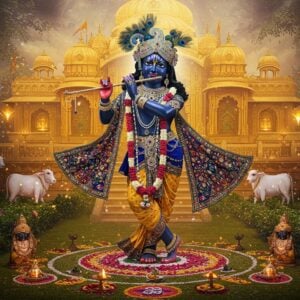
Panchamakara, often referred to as the “Five Ms,” is a deeply symbolic practice rooted in Tantric traditions. These five elements—Madya (wine), Mamsa (meat), Matsya (fish), Mudra (grain), and Maithuna (sexual union)—hold profound spiritual significance, representing a journey towards liberation and self-realization. It’s essential to understand that the interpretation and practice of Panchamakara vary significantly across different Indian cultural contexts, reflecting a rich tapestry of philosophical and historical influences.
Panchamakara in Hindi Traditions
Across the Hindi-speaking regions of India, Panchamakara plays a vital role in spiritual practices, particularly within the worship of deities like Shiva and Kali. Each element is believed to symbolize a specific facet of the practitioner’s spiritual development:
- Madya: Symbolizes liberation from the intoxicating allure of worldly attachments, helping one achieve clarity and focus on the spiritual path. It encourages a shift from external distractions to internal awareness.
- Mamsa: Represents the overcoming of material desires and cravings, promoting detachment from the physical realm. It’s a journey towards inner peace and contentment, freeing oneself from the pursuit of worldly possessions.
- Matsya: Signifies the pursuit of spiritual freedom and the courage to swim against the tide of societal norms. Just as a fish navigates the currents, practitioners strive to overcome obstacles and move towards enlightenment.
- Mudra: Embodies the mastery of desires and the cultivation of self-control, directing energy towards positive pursuits. It emphasizes the importance of discipline and focus in spiritual practice.
- Maithuna: Represents the harmonious union of energies within oneself, leading to self-realization and enlightenment. It signifies the integration of inner forces to achieve spiritual wholeness. It’s important to note that this element is often misinterpreted and its true meaning is far beyond the literal.
These elements, when understood and practiced with the right guidance, are believed to contribute to achieving moksha, or liberation. It’s worth noting that variations exist in how different Hindi communities interpret and practice Panchamakara, reflecting the diversity of regional beliefs and customs.
Panchamakara in Telugu Traditions
In the Telugu-speaking states of Andhra Pradesh and Telangana, Panchamakara holds a distinct place in cultural and spiritual life. Telugu traditions beautifully blend local deities and customs with broader Tantric practices, resulting in a unique understanding of the Five Ms.
Influence of Regional Deities
Deities deeply revered in Telugu regions, such as Lord Venkateshwara and Goddess Yellamma, influence the interpretation and practice of Panchamakara. These elements are often incorporated into temple rituals and festivals, showcasing the seamless integration of spiritual and cultural expressions.
Adaptation in Rituals
The Panchamakara elements are often adapted in daily rituals to suit individual needs and beliefs. For instance, Madya might be symbolically represented by offerings of coconut water, while Mamsa can be symbolized by vegetarian alternatives. Matsya often finds expression through symbolic acts grounded in local customs, representing the journey towards spiritual freedom.
Role of Temple Festivals
Temple festivals serve as vital platforms for preserving and transmitting Panchamakara traditions. During these vibrant celebrations, communities come together to perform rituals that reflect these practices, passing down knowledge and understanding to future generations. This shared experience strengthens the community bond and reinforces cultural identity.
Contributions of Saints and Scholars
Telugu saints and scholars have played a significant role in shaping the understanding of Panchamakara within the community. Their insightful interpretations, grounded in local philosophies, ensure that these ancient practices remain relevant and resonate with contemporary beliefs, bridging the gap between tradition and modern-day spirituality.
Panchamakara Kya Hai: Unveiling the Symbolism
The Five Ms of Panchamakara hold deep symbolic meanings that extend beyond their literal interpretations. Madya, Mamsa, Matsya, Mudra, and Maithuna represent a transformative path towards transcending worldly attachments.
Madya (Wine):
Madya signifies liberation from the intoxicating effects of worldly desires and distractions. It encourages a shift in focus from the external to the internal, promoting clarity and self-awareness.
Mamsa (Meat):
Mamsa symbolizes the overcoming of material cravings and the development of detachment from the physical realm. It represents the journey towards inner peace and contentment, free from the pursuit of worldly possessions.
Matsya (Fish):
Matsya embodies the pursuit of spiritual freedom, encouraging practitioners to swim against the currents of societal norms and expectations. It symbolizes resilience, adaptability, and the courage to chart one’s own spiritual course.
Mudra (Grain):
Mudra stands for the mastery of desires and the cultivation of self-control. It represents the ability to channel one’s energies positively and cultivate discipline in spiritual practice. This mastery empowers individuals to make conscious choices and live a more fulfilling life.
Maithuna (Sexual Union):
Maithuna signifies the harmonious union of energies within oneself, leading to self-realization and a deeper understanding of one’s true nature. It represents the integration of inner forces to achieve spiritual wholeness.
These elements, when approached with reverence and proper guidance, can facilitate a profound transformation by challenging limiting beliefs and elevating consciousness. They are not mere rituals but rather powerful tools for spiritual awakening.
Comparative Analysis of Panchamakara Across Traditions
The interpretation and practice of Panchamakara vary significantly across different Tantric traditions, such as Shaivism, Shaktism, and Vajrayana Buddhism, reflecting diverse cultural influences and philosophical perspectives.
Commonalities and Distinctions
While the pursuit of liberation and self-realization remains a common thread, the specific practices and interpretations differ based on regional beliefs, historical contexts, and the specific deities worshipped within each tradition.
Syncretic Spiritual Landscape
Panchamakara contributes to India’s rich and diverse syncretic spiritual landscape, where various traditions coexist and often enrich each other through the sharing of wisdom and practices.
Contemporary Relevance
In contemporary spiritual practice, Panchamakara continues to hold relevance, with practitioners adapting its teachings to align with modern life while honoring its ancient roots.
Cultural and Social Implications of Panchamakara
Panchamakara practices often challenge established societal norms and spark important dialogues about ethics, spirituality, and the evolving relationship between tradition and modernity.
Community Dynamics
These practices influence community dynamics by encouraging open discussions about tradition versus modernity, fostering critical thinking and a deeper understanding of diverse perspectives.
Gender Perspectives
The roles of women in Panchamakara rituals offer valuable insights into gender dynamics within different traditions. Their participation varies across regions, reflecting evolving interpretations and societal shifts.
Modern Adaptations
In urban settings, we often see adaptations of Panchamakara that seek to balance traditional practices with the demands of modern life. These reinterpretations ensure that these ancient teachings remain alive and meaningful for contemporary practitioners.
How Poojn.in Supports Your Panchamakara Rituals
At Poojn.in, we offer a wide selection of authentic items and expert guidance to support your Panchamakara rituals, recognizing that each tradition has its own unique requirements and interpretations of the Five Ms.
For those following a traditional Vedic approach, we offer:
- Pure copper and brass vessels: Browse our collection of handcrafted vessels, perfect for maintaining the purity of your offerings.
- Natural incense sticks and dhoop: Enhance the sanctity of your space with our range of natural fragrances.
For those engaging in Tantric practices, we provide:
- Special ritual items: Sourced responsibly to support your advanced practices.
- Traditional herbs and roots: Carefully selected for authenticity and quality.
We understand the importance of regional variations, and our products are available under various names, including:
- Arjun Bark (English)
- Arjuna (Hindi)
- And more…
We also provide expert guidance through:
- Detailed product descriptions
- Clear usage instructions
Shop now at Poojn.in for authentic ritual items conveniently delivered to your doorstep.
Embracing Panchamakara in the Modern World
Panchamakara is more than just a set of rituals; it represents a profound journey of self-discovery and spiritual growth. In Telugu traditions, it weaves together local customs with ancient Tantric practices, creating a vibrant tapestry of cultural and spiritual expression. Across India’s diverse traditions, Panchamakara offers unique interpretations that resonate with regional beliefs and practices.
In today’s world, the teachings of Panchamakara hold remarkable relevance, guiding practitioners on the path to liberation and self-realization while honoring time-honored traditions. As communities adapt these practices to suit contemporary life, they foster open conversations about spirituality, ethics, and the evolution of cultural values.
Panchamakara invites us to delve deeper into our heritage, embrace change, and forge a deeper connection with our roots. It empowers us to grow spiritually, finding a balance between tradition and modernity that enriches both our individual lives and our communities. Through its profound teachings, we embark on a journey of continuous self-discovery and transformation.
Frequently Asked Questions about Panchamakara
What is Panchamakara? Panchamakara, often called the “Five Ms,” is a set of rituals found in certain Tantric traditions. These rituals involve specific substances, all starting with ‘M’ in Sanskrit. It’s important to note that the practice’s true meaning is often misunderstood by those outside of these traditions.
How is Panchamakara practiced in different cultures? The practice of Panchamakara varies considerably. In some traditions, it is largely symbolic, using substitute items to represent the Five Ms. In others, a more literal interpretation is followed. This diversity reflects the rich tapestry of beliefs and practices within Tantric traditions.
Why is Panchamakara significant in Tantra? Panchamakara is believed to assist practitioners in transcending societal norms and taboos. Its ultimate aim is to facilitate spiritual liberation and enlightenment by breaking down limiting beliefs and challenging conventional ways of thinking.
What are the substances used in Panchamakara? The Five Ms are Madya (wine), Mamsa (meat), Matsya (fish), Mudra (grain or parched cereal), and Maithuna (sexual union). Each of these elements carries symbolic significance within the rituals. Understanding these symbolic meanings is key to grasping the essence of Panchamakara.
How is Panchamakara viewed in modern times? Views on Panchamakara are diverse and complex. Some consider it an integral part of Tantric practices, while others view it as outdated or misinterpreted. It’s a topic that requires careful consideration and sensitivity.
Is Panchamakara performed openly in all traditions? No. Due to its sometimes controversial nature and the potential for misunderstanding, Panchamakara is often practiced discreetly within many traditions.
Can Panchamakara be practiced without the actual substances? Yes. Many practitioners opt for symbolic representations of the five substances. This approach emphasizes the inner spiritual transformation rather than the literal consumption or use of the elements. It’s a way to engage with the core principles of Panchamakara without necessarily adhering to its more literal interpretations.
Are there any texts that explain Panchamakara in detail? Yes, numerous Tantric texts and commentaries delve into the complexities of Panchamakara, providing insights into its meanings and practices across various traditions. These texts offer valuable resources for those seeking a deeper understanding of this intricate practice.


